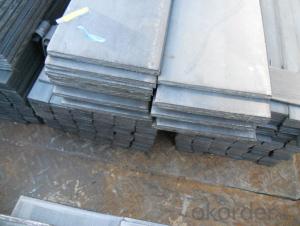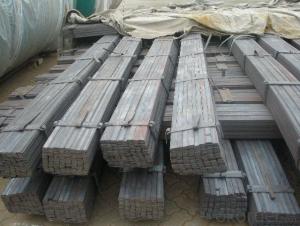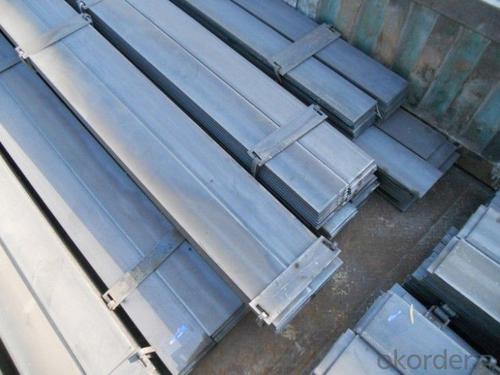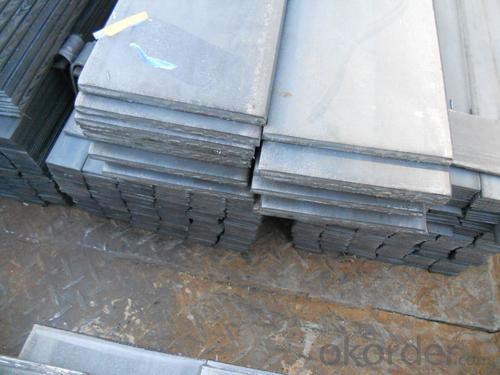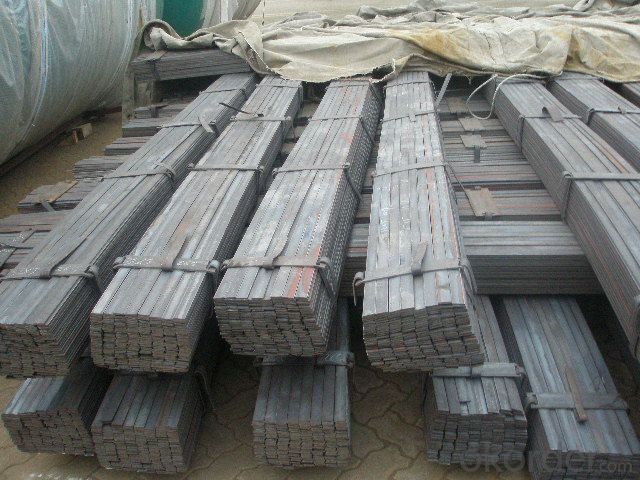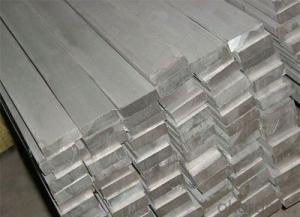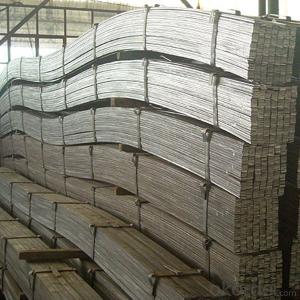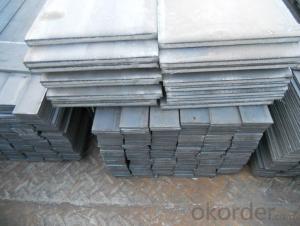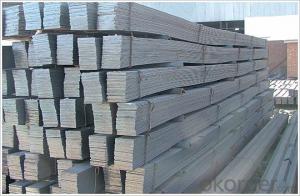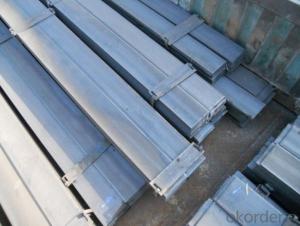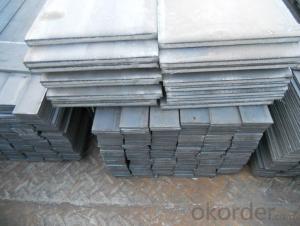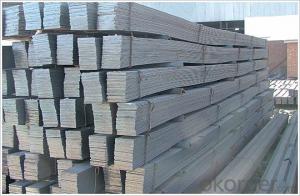Slit Cutting Flat Bar in Q235B with High Quality and Best price
- Loading Port:
- Tianjin
- Payment Terms:
- TT OR LC
- Min Order Qty:
- 25 m.t.
- Supply Capability:
- 10000 m.t./month
OKorder Service Pledge
OKorder Financial Service
You Might Also Like
Product Description:
OKorder is offering high quality Slit Cutting Flat Bar at great prices with worldwide shipping. Our supplier is a world-class manufacturer of steel, with our products utilized the world over. OKorder annually supplies products to European, North American and Asian markets. We provide quotations within 24 hours of receiving an inquiry and guarantee competitive prices.
Product Applications:
Slit Cutting Flat Bars are ideal for structural applications and are widely used in the construction of buildings and bridges, and the manufacturing, petrochemical, and transportation industries.
Product Advantages:
OKorder's Slit Cutting Flats Barare durable, strong, and resist corrosion.
Main Product Features:
· Premium quality
· Prompt delivery & seaworthy packing (30 days after receiving deposit)
· Corrosion resistance
· Can be recycled and reused
· Mill test certification
· Professional Service
· Competitive pricing
Product Specifications:
Manufacture: Slit Cutting
Grade: Q195 – 235
Certificates: ISO, SGS, BV, CIQ
Length: 6m – 12m, as per customer request
Packaging: Export packing, nude packing, bundled
Chemical composition of Q235
Alloy No | Grade | Element(%) | ||||
C
| Mn
| S
| P
| Si
| ||
Q235
|
B
|
0.12—0.20 |
0.3—0.7 |
≤0.045 |
≤0.045
|
≤0.3
|
Physical properties of Q235
Alloy No | Grade | Yielding strength point(Mpa) | Tensile strength (Mpa) | Elongation after fracture(%) | ||||||
Thickness (mm) | Thickness (mm) | |||||||||
≤16 | >16--40 | >40--60 | >60--100 | ≤16 | >16--40 | >40--60 | >60--100 | |||
≥ | ≥ | |||||||||
Q235 |
B |
235 |
225 |
215 |
205 |
375--500 |
26 |
25 |
24 |
23 |
FAQ:
Q1: Why buy Materials & Equipment from OKorder.com?
A1: All products offered byOKorder.com are carefully selected from China's most reliable manufacturing enterprises. Through its ISO certifications, OKorder.com adheres to the highest standards and a commitment to supply chain safety and customer satisfaction.
Q2: How do we guarantee the quality of our products?
A2: We have established an advanced quality management system which conducts strict quality tests at every step, from raw materials to the final product. At the same time, we provide extensive follow-up service assurances as required.
Q3: The products are invoicing on theoritical weight or on actual weight?
A3: We can do it in both manners, according to the customers' request.
Images:
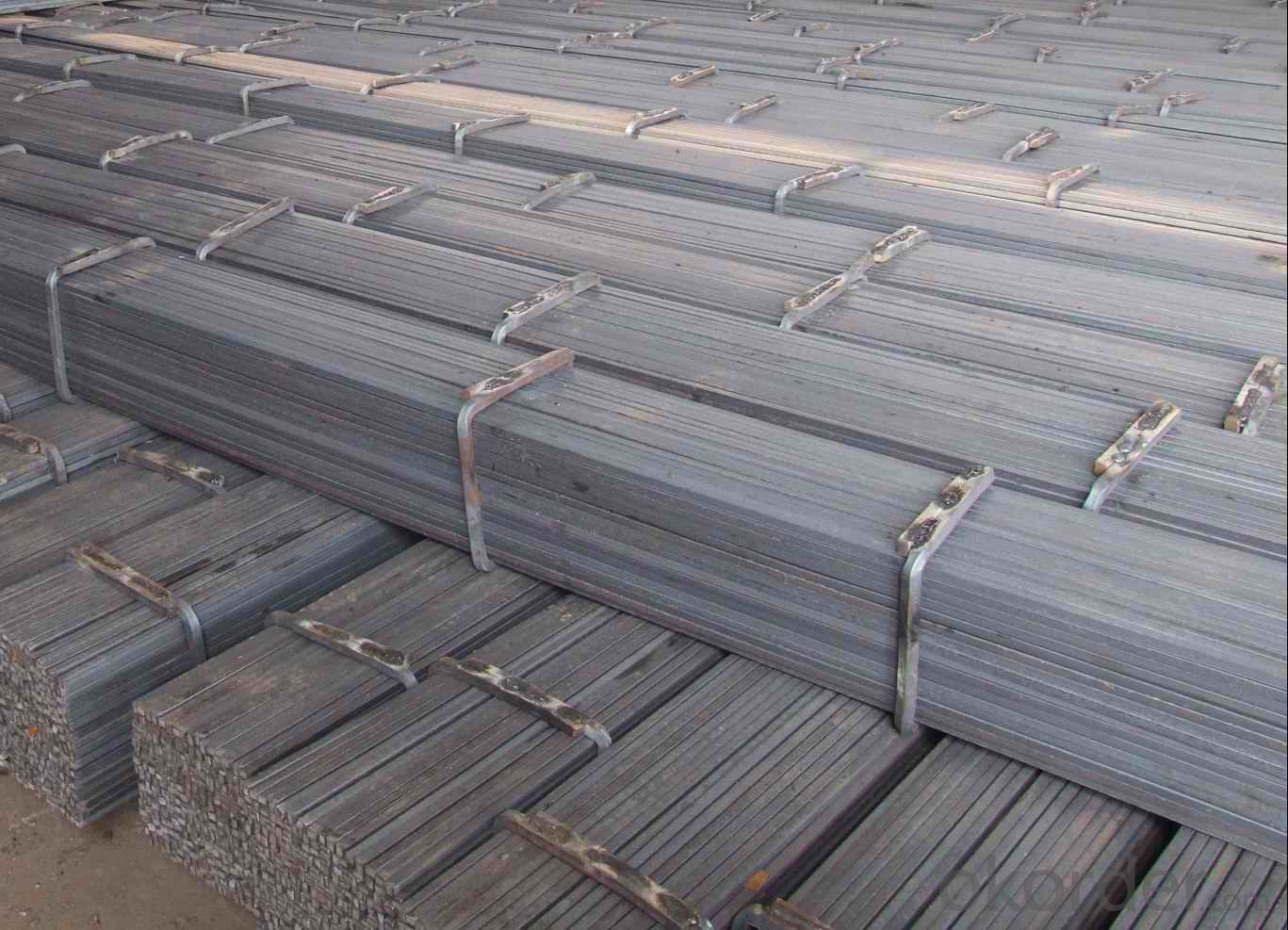
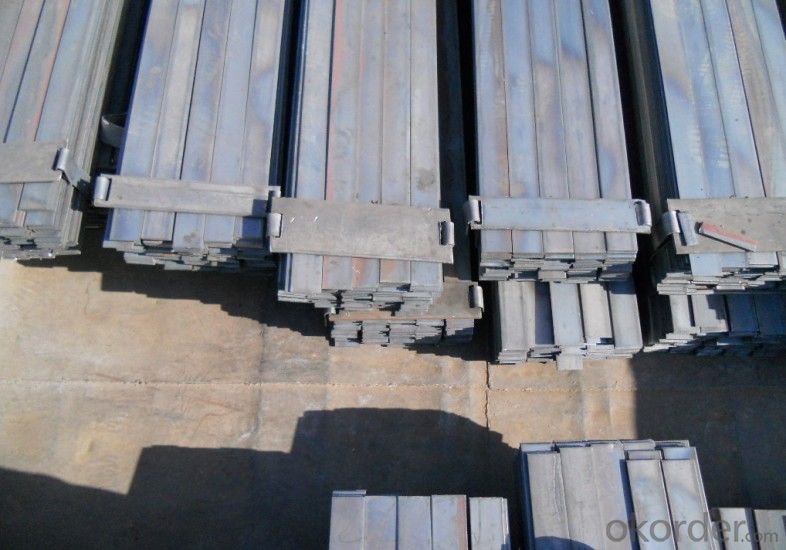
- Q: What are the different grades of steel available for flat bars?
- The different grades of steel available for flat bars can vary depending on the specific application and requirements. Some common grades include mild steel, carbon steel, stainless steel, and alloy steel. Each grade has unique properties and characteristics that make it suitable for different purposes, such as strength, corrosion resistance, and machinability. It is important to choose the appropriate grade of steel based on the intended use and desired performance.
- Q: Can steel flat bars be bent or formed?
- Yes, steel flat bars can be bent or formed. Steel is a highly versatile and malleable material, which means it can be easily manipulated to take on different shapes. The process of bending or forming steel flat bars typically involves applying force to the bar, either through mechanical means or through the use of heat. This force allows the steel to be bent or shaped into various angles or curves, depending on the desired outcome. Bending or forming steel flat bars is a common practice in various industries, including construction, manufacturing, and metalworking.
- Q: The minus sign in front of what 40 galvanized flat steel
- Refers to the galvanized flat steel, width 12-300mm, thickness 4-60mm, cross section is rectangular and with pure edge of galvanized steel. Galvanized flat steel can be finished steel, also can be galvanized pipe blank and galvanized belt.
- Q: Can steel flat bars be used for making jewelry?
- Certainly, jewelry can indeed be created using steel flat bars. Steel, being a versatile and durable material, lends itself well to the formation of diverse shapes, including flat bars. These bars can subsequently be molded and manipulated to form distinctive and individualized jewelry pieces. In recent times, steel jewelry has gained considerable popularity owing to its contemporary and industrial appearance. It exudes a sleek and modern aesthetic that can be further accentuated by employing various finishes, such as polished, brushed, or even gold or silver plating. Moreover, steel jewelry boasts resistance against tarnishing and corrosion, rendering it a pragmatic choice for everyday use. Additionally, steel flat bars can be effortlessly engraved or imprinted with designs, names, or symbols that hold personal significance, thus imparting a customized touch to the jewelry. Nonetheless, it is worth noting that steel is a weighty material, which may render it unsuitable for delicate or lightweight jewelry designs.
- Q: Can steel flat bars be used as handrails?
- Yes, steel flat bars can be used as handrails. Steel flat bars are commonly used for handrails due to their strength and durability. They provide a sturdy and stable grip for users and can withstand heavy loads. Additionally, steel flat bars can be easily customized and shaped to fit any desired design or style. They can be painted or coated with a protective finish to enhance their appearance and prevent corrosion. Overall, steel flat bars are a popular choice for handrails in both residential and commercial spaces.
- Q: Can steel flat bars be used for making hinges or brackets?
- Yes, steel flat bars can be used for making hinges or brackets. Steel is a strong and durable material that can withstand heavy loads and provide stability. The flat shape of the bar allows for easy fabrication and shaping into desired forms for hinges or brackets. Steel's versatility also allows for different finishes, such as galvanized or powder-coated, which can enhance its corrosion resistance and aesthetic appeal. It is important to consider the specific requirements and weight-bearing capacity needed for the hinges or brackets, as well as any necessary reinforcement or additional components that may be required for specific applications.
- Q: What are the common finishes for steel flat bars?
- There are several common finishes for steel flat bars, each serving a specific purpose. The most basic finish is a hot rolled finish, which is achieved by heating the steel to a high temperature and then rapidly cooling it. This finish results in a rough, industrial look with visible mill scale. Another common finish is a cold rolled finish, which involves passing the steel through rollers at room temperature to achieve a smoother and more refined surface. Cold rolled finishes are typically used when a more aesthetically pleasing appearance is desired. For added protection against corrosion, steel flat bars can be coated with a galvanized finish. This involves applying a layer of zinc to the surface of the steel, which acts as a barrier against moisture and other corrosive elements. Alternatively, steel flat bars can be treated with a painted or powder coated finish. These finishes provide both protection against corrosion and a wide range of color options, making them suitable for various architectural and decorative applications. Lastly, steel flat bars can also be polished to achieve a reflective, mirror-like finish. This finish is often used in decorative applications where a high-end, luxurious appearance is desired. Overall, the choice of finish for steel flat bars depends on the intended use and desired aesthetic outcome.
- Q: Can steel flat bars be used for making brackets or brackets?
- Yes, steel flat bars can be used for making brackets or brackets. Steel flat bars provide strength, durability, and stability, making them suitable for various structural applications, including brackets.
- Q: What are the different grades of steel flat bars?
- The different grades of steel flat bars typically include low carbon, mild steel, high carbon, and alloy steel grades.
- Q: What are the different types of surface finishes for copper steel flat bars?
- There are several different types of surface finishes that can be applied to copper steel flat bars. Some of the most common finishes include: 1. Mill finish: This is the standard finish that is applied to copper steel flat bars during the manufacturing process. It has a smooth and shiny appearance, but may have slight imperfections or marks from the milling process. 2. Polished finish: This finish involves buffing the surface of the flat bar to achieve a high shine and smooth texture. It is often used for decorative purposes or when a more refined look is desired. 3. Brushed finish: In this finish, the surface of the flat bar is brushed with a wire brush to create a textured appearance. It can be done in different directions to achieve different effects, such as horizontal or vertical brushing. 4. Satin finish: This finish has a smooth and matte appearance, with a subtle sheen. It is achieved by brushing the surface with a fine abrasive material, such as sandpaper or a nylon pad. 5. Antiqued finish: This finish is achieved by applying chemical treatments or patinas to the surface of the flat bar. It creates an aged or weathered appearance, adding character and depth to the metal. These are just a few examples of the different types of surface finishes that can be applied to copper steel flat bars. The choice of finish will depend on the desired aesthetic, functionality, and specific requirements of the project or application.
Send your message to us
Slit Cutting Flat Bar in Q235B with High Quality and Best price
- Loading Port:
- Tianjin
- Payment Terms:
- TT OR LC
- Min Order Qty:
- 25 m.t.
- Supply Capability:
- 10000 m.t./month
OKorder Service Pledge
OKorder Financial Service
Similar products
Hot products
Hot Searches
Related keywords

